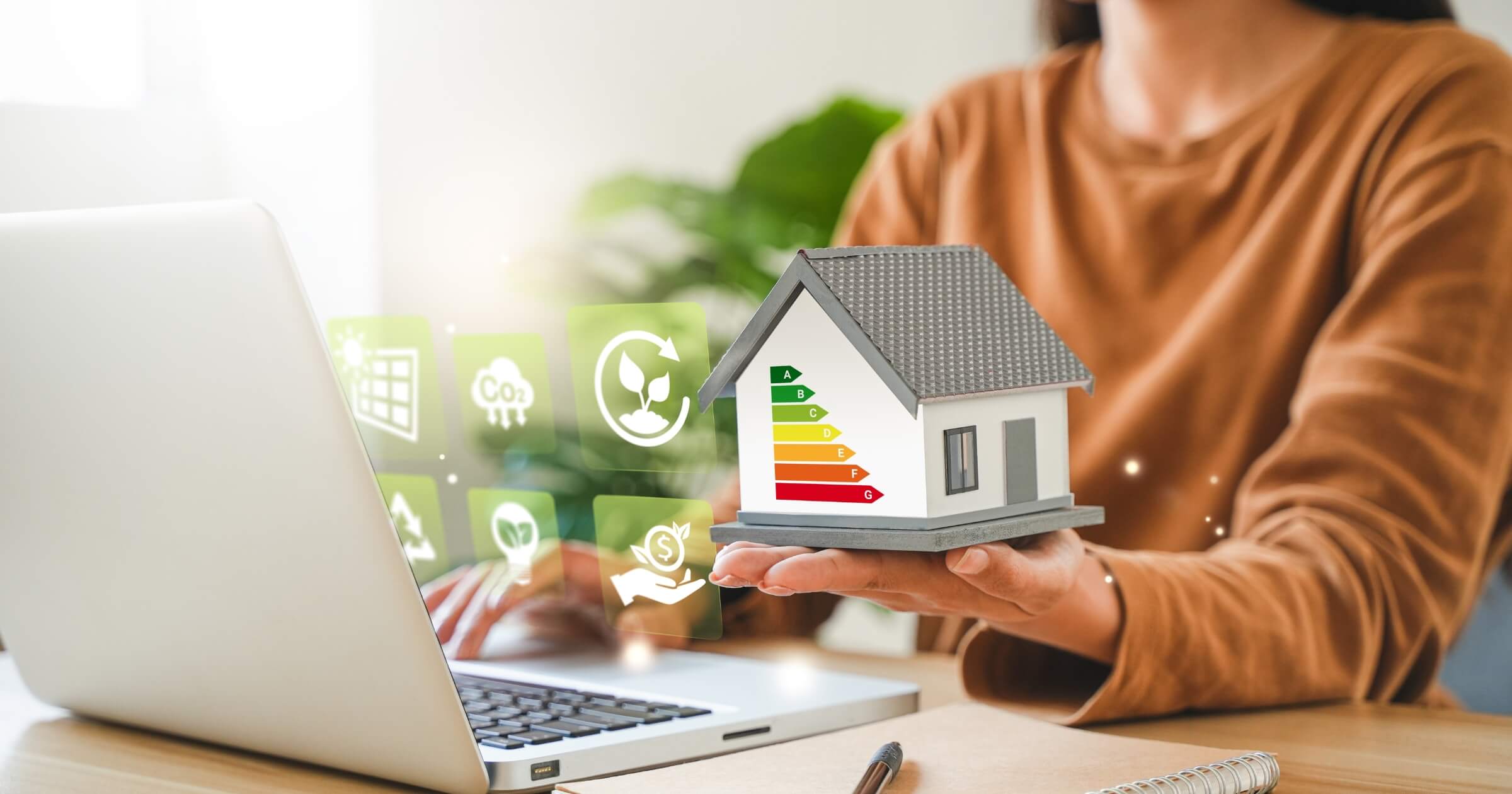More homeowners are finding smart ways to make their homes greener without draining their savings. From energy use to indoor air quality, even small changes can make a noticeable difference in how a home functions and feels. In this article, we’ll explore how simple eco-friendly home improvements simple, such as using less electricity or installing better insulation, can help reduce your bills, make your space feel more comfortable, and reduce your impact on the planet.
Quick look
- Small, affordable changes can make your home more eco-friendly without requiring a major renovation.
- Smart upgrades like LED lighting, low-flow fixtures, and smart thermostats improve comfort and reduce utility bills.
- Eco-friendly improvements support better indoor air quality, energy efficiency, and potential resale value.
- Using sustainable materials and native landscaping helps reduce environmental impact and long-term costs.
What does eco-friendly mean for homeowners?
Living sustainably comes down to everyday choices that are better for the planet and for your well-being. Around the house, this might mean using less energy and water, generating less waste, or selecting materials that are safe, long-lasting, and environmentally friendly. Simple changes like adding insulation, swapping in non-toxic paint, or upgrading to efficient appliances can all add up to a healthier home and a smaller environmental impact.
The benefits of eco-friendly home design
Even small changes at home can make a real difference. You might notice lower energy use, cleaner air, and a more comfortable place to live. In some cases, these updates can also increase your home’s value. Whether you’re planning a big project or just starting with the basics, it’s often worth the effort:
- Reduced utility costs
- Cleaner indoor air
- Less environmental impact
- Greater resale value
- Improved comfort year-round
- Local incentives or rebates for green upgrades
15 best eco-friendly home improvements anyone can do
You don’t have to spend a lot or gut your entire house to start living more sustainably. Small, budget-friendly improvements can still make a real difference by cutting down your energy use, saving money, and making your home more comfortable day to day. It often starts with just one simple change.
1. Switch to LED lighting
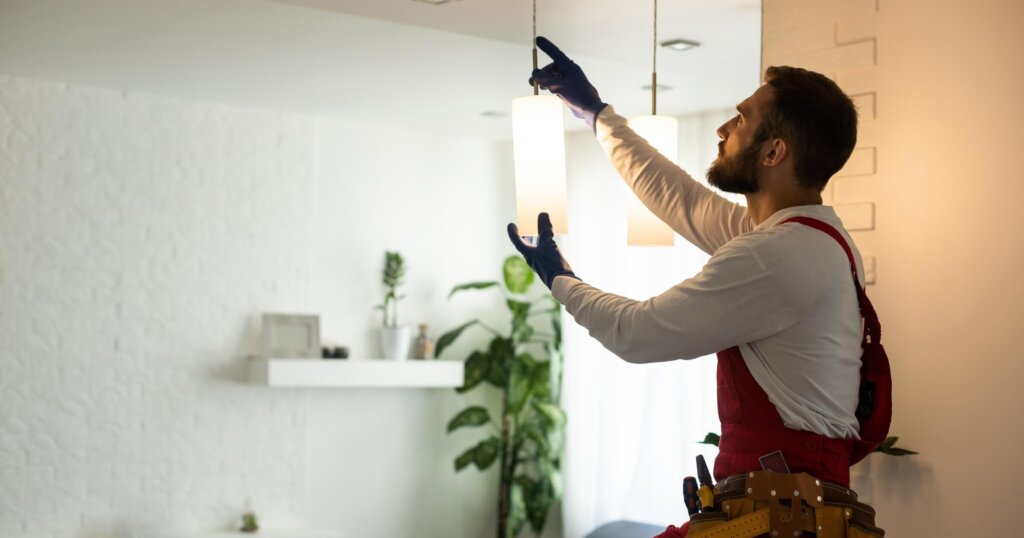
Photo courtesy of https://www.shutterstock.com/
Switching halogen or incandescent bulbs for LEDs is one of the easiest and most cost-effective eco-friendly home improvements you can make. LEDs use up to 90 percent less energy and last significantly longer. They also contain no mercury, which makes them safer for your home and easier to dispose of responsibly.
2. Install a smart thermostat
Smart thermostats like Nest, Ecobee, or Honeywell are designed to learn your habits and adjust your heating and cooling automatically. By programming your HVAC system to run more efficiently when you’re home or away, you can reduce energy waste and lower your utility bills. Homeowners can save about 10 to 15 percent on heating and cooling costs with a properly installed smart thermostat.
3. Weatherstrip windows and doors
Small drafts around windows and doors can let out a surprising amount of heated or cooled air. Adding weatherstripping or caulking gaps is an easy, low-cost way to seal those leaks and boost your home’s energy efficiency. Sealing air leaks can save homeowners up to 10 percent on annual energy bills while keeping indoor temperatures more consistent year-round.
4. Add low-flow faucets and showerheads
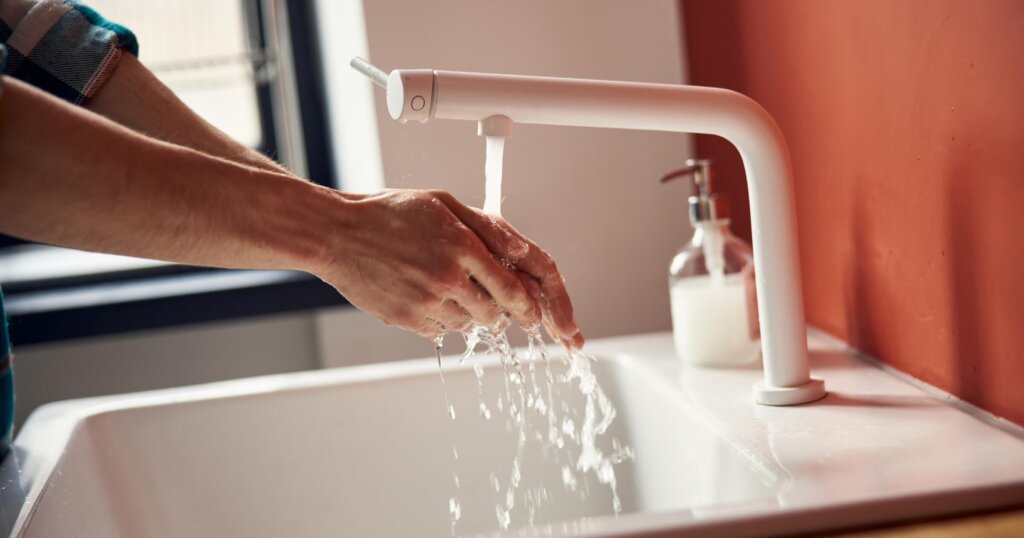
Photo courtesy of https://www.shutterstock.com/
Upgrading to low-flow faucets and showerheads is a simple way to reduce your water use without giving up water pressure or comfort. These fixtures can cut household water consumption by 30 to 50 percent. Over time, this results in lower water bills and less strain on your local water supply. It’s a low cost and simple eco-friendly home improvement that can yield big results if hydro is expensive in your region.
5. Use non-toxic, low-VOC paint
Many standard paints release harsh fumes as they dry, thanks to something called volatile organic compounds, or VOCs. These chemicals can linger in the air, affecting the quality of your indoor environment. Choosing low-VOC or zero-VOC paint is a safer way to freshen up your space, especially in rooms with less ventilation, like bedrooms or nurseries. It’s a simple swap that’s better for your health and easier on the environment.
6. Start a composting system
Whether you use a backyard bin or a small indoor composter, this simple habit helps reduce landfill waste and lowers methane emissions. Composting turns kitchen scraps and yard waste into nutrient-rich soil for your garden. In fact, composting can divert up to 30 percent of household waste from landfills.
7. Switch to sustainable flooring
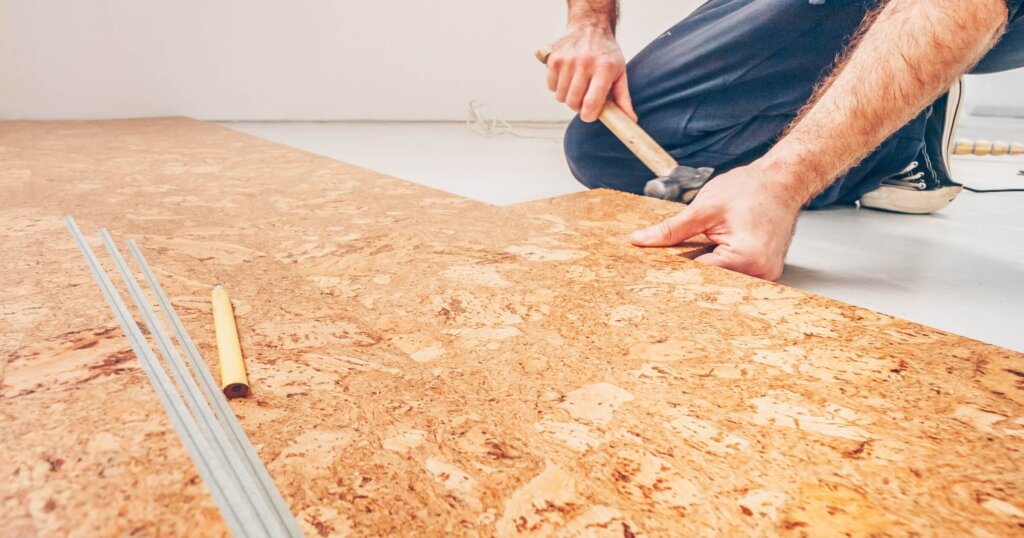
Photo courtesy of https://www.shutterstock.com/
Eco-friendly flooring is a great way to lower your home’s environmental impact while keeping things stylish and comfortable. Options like bamboo, cork, and reclaimed wood are tough enough to last and do not take as much from the planet to produce. Cork is a great example. It is made by stripping bark from the tree without harming it, and it naturally helps keep your home warm in winter and cool in summer.
8. Add insulation in key areas
Insulating areas like the attic, basement, and crawl spaces can make a big difference in your home’s energy efficiency. These upgrades help keep warm air in during the winter and hot air out during the summer, reducing the load on your HVAC system. Proper insulation can cut heating and cooling costs by around 15 percent, making it a smart investment with long-term savings.
9. Install rain barrels
Rain barrels are a simple way to catch and reuse rainwater for watering plants, lawns, or even washing outdoor tools. This helps reduce your dependence on municipal water systems and lowers your utility bill during the growing season. Some cities, including Portland, Oregon and Austin, Texas, offer rebate programs to help cover the cost of installing rain barrel systems. It’s a budget-friendly upgrade that also supports water conservation.
10. Upgrade to Energy Star appliances
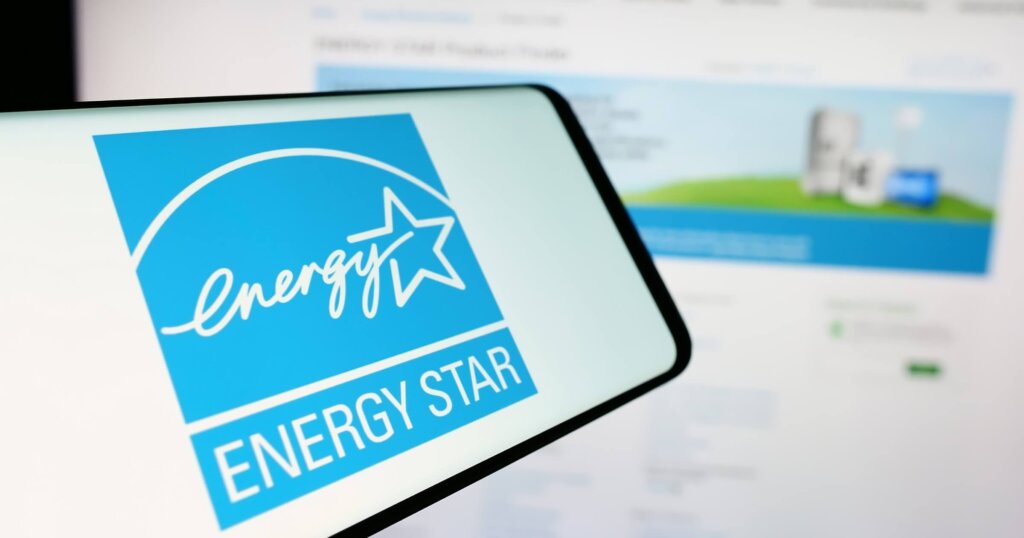
Photo courtesy of https://www.shutterstock.com/
Old appliances can be a major source of energy and water waste. Replacing them with Energy Star-certified models helps cut down on both. Refrigerators, dishwashers, and washing machines that carry the Energy Star label meet strict efficiency standards and can significantly reduce your household utility use over time. The upfront cost often pays for itself through lower monthly bills.
11. Add indoor plants for air purification
Some houseplants, like spider plants, snake plants, and pothos, do more than just look nice. They clean the air by absorbing pollutants and releasing oxygen. Indoor plants can also help regulate humidity, creating a more comfortable and balanced indoor environment without relying on costly equipment.
12. Install solar-powered outdoor lighting
Solar-powered lights are a simple way to add brightness to your yard, walkway, or garden without raising your electricity costs. These lights charge up during the day and switch on by themselves when the sun goes down. They’re reliable, energy efficient, and simple to install. You can find plenty of affordable options at hardware stores, often for under $50.
13. Switch to a tankless water heater
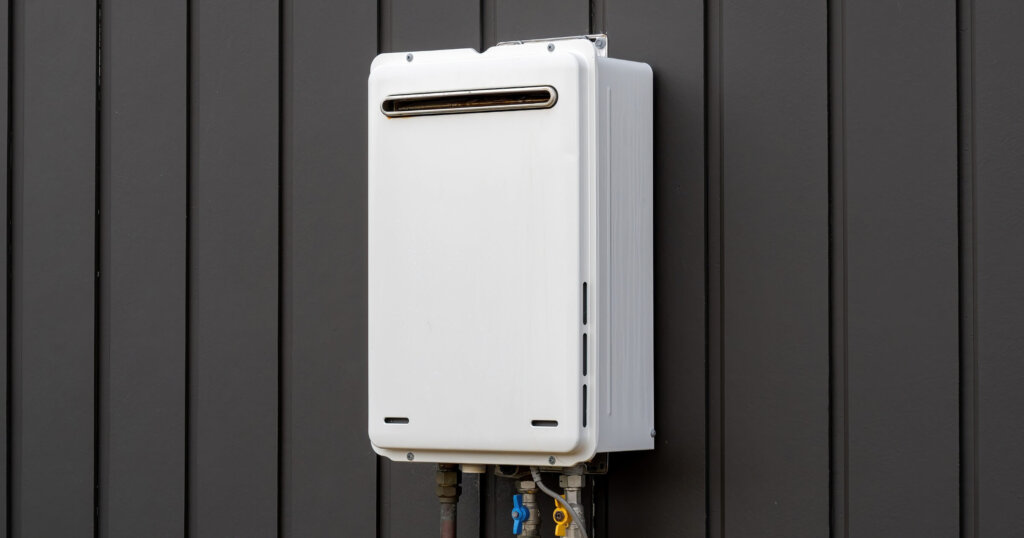
Photo courtesy of https://www.shutterstock.com/
Tankless water heaters provide hot water on demand instead of constantly heating a large tank, which saves energy and space. For households that use less than 41 gallons of hot water per day, these systems can be up to 34 percent more energy-efficient. While the upfront cost is higher than traditional models, the long-term savings on energy bills make it a worthwhile upgrade for many homes.
14. Choose recycled or upcycled materials
Working with recycled or repurposed materials is a great way to reduce waste and avoid purchasing new supplies. Items like reclaimed wood, old tiles, or vintage fixtures can bring a lot of personality to a space, helping to make your home feel more unique while keeping things environmentally friendly.
15. Go for native landscaping
Planting native species in your yard is a low-maintenance way to create a healthier outdoor space. Because these plants are already suited to your local climate, they need less water, fertilizer, and care than traditional grass lawns or imported plants. Native landscaping also provides food and shelter for local wildlife like bees, butterflies, and birds, which helps your yard thrive more naturally and sustainably.
Bottom line
Even small updates, like fixing drafts, switching to efficient lighting, or using safer paint, are eco-friendly home improvements that can make your space more comfortable, save money on bills, and reduce your environmental impact at the same time.
Related reads:
- 14 Must-Watch Home Renovation Shows to Inspire Your Next DIY Project
- Eco-Friendly Luxury Homes, Ranked
- Modular Construction
- Edged Energy Breaks Ground on Eco-Friendly Data Center in Arizona
- LEGO Starts Construction on $1B Eco-Friendly Factory in Virginia
Subscribe to our newsletter for more sustainable construction ideas, trends, and home upgrades.
